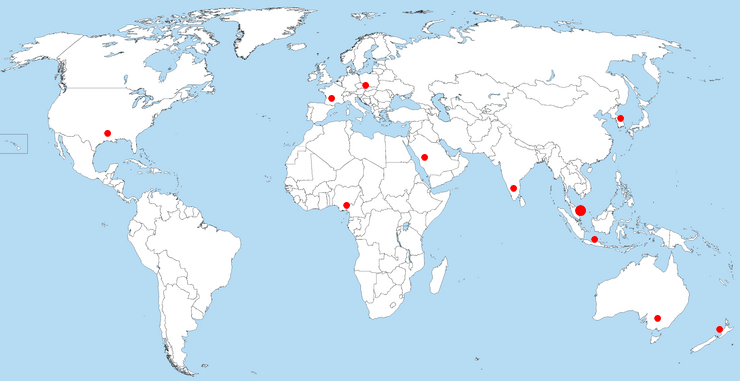DESIGN OF A DROP IMPACT TEST RIG FOR ACCELEROMETER VALIDATION FOR TURBOCHARGER APPLICATION
DOI:
https://doi.org/10.11113/jm.v45.452Keywords:
Turbocharger, Vibration analysis, High speed machine, Experimental Testing, RotordynamicsAbstract
Automotive turbochargers increase internal combustion engine power and efficiency in passenger and commercial vehicles. The vibrational characteristics need to be closely monitored during testing as it indicates the state of the turbocharger and its components. For this purpose, an accurate accelerometer is a must. This paper presents the design of a drop impact test rig for accelerometer validation. The design is based on ASTM E1876 standard and able to cover a frequency range of 0-6000 Hz. This represents a typical turbocharger operating speed of up to 120,000 rpm, with four common types of vibrational mode expected – synchronous, sub-synchronous, harmonic, and non-synchronous. Three materials have been selected for the specimen plate, namely ABS, Copper and AISI 1050 steel. The abovementioned frequency range can be satisfied by varying the specimen thickness. The drop impact test rig allows four different drop heights. Further combined with four different steel ball sizes, the magnitude of induced acceleration can be manipulated during the drop test. This drop impact test rig enables on-site accelerometer validation before any turbocharger gas stands testing, which is crucial for an accurate vibrational measurement.
References
Watson N, Janota MS. Turbocharging the internal combustion engine. The Macmillan Press Ltd.; 1982.
Holmes, R., 2002. Turbocharger Vibration - A Case Study. IMechE Conference Transactions C692/031/2002. Seventh International Conference on Turbochargers and Turbocharging.
Sanliturk KY and Koruk H (2013). Development and validation of a composite finite element with damping capability. Composite Structures, 97: 136-146.
Accelerometer Calibration Using the VR9500 Tutorial - Vibration Research. Vibration Research. (2021). Available online at https://vibrationresearch.com/resources/ accelerometer-calibration-using-the-vr9500/. [Assessed: 31 July 2021]
Modalshop.com. (2021). Basic of Calibration. Available online at http://modalshop.com/filelibrary/Basics%20of%20Calibration.pdf. [Accessed: 30 July 2021]
Endevco.com. (2021). Acceleration level of drop test. Available online at https://endevco.com/contentStore/mktgContent/endevco/dlm_uploads/2019/02/TP321.pdf. [Accessed: 30 July 2021]
Botelho EC, Campos AN, De Barros E, Pardini LC, and Rezende MC, 2006. Damping behavior of continuous fiber/metal composite materials by the free vibration method. Composites Part B: Engineering, 37(2): 255-263.
National Instrument (2021). Measuring Vibration with Accelerometers. Available online at https://www.ni.com/en-my/innovations/white-papers/06/measuring-vibration-with-accelerometers.html. [Accessed: 26 January 2021]
MatWeb (2021). Material property data. Available online at http://www.matweb.com/. [Assessed: 29 November 2021].
ASTM (2015). ASTM E1876-15: Standard test method for dynamic Young's modulus, shear modulus, and Poisson’s ratio by impulse excitation of vibration. American Society for Testing Materials International, West Conshohocken, USA. Available online at: https://www.astm.org/Standards/E1876.html. [Accessed: 30 July 2021]
Tognana S, Salgueiro W, Somoza A, and Marzocca A (2010). Measurement of the Young's modulus in particulate epoxy composites using the impulse excitation technique. Materials Science and Engineering: A, 527(18): 4619-4623.
Downloads
Published
How to Cite
Issue
Section
License
Copyright of articles that appear in Jurnal Mekanikal belongs exclusively to Penerbit Universiti Teknologi Malaysia (Penerbit UTM Press). This copyright covers the rights to reproduce the article, including reprints, electronic reproductions or any other reproductions of similar nature.







